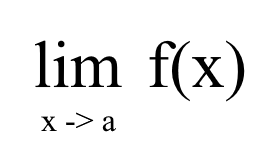Day 3 - Calculus (Limit)
Derivatives tricks..
Introduction
For today, we’re going to learn about random methods to solve derivatives. I got no introduction, let’s just move on man.
Random Fact!
When solving a derivative question, if we want to find a specific x on the derivative and the answer is larger than 0 (x > 0), that means the graph is going up on that x. If it’s smaller than 0 (x < 0), it’s the opposite. This will be useful in finding the peak or the minimum is for the derivative.
Binomial Theorem
What’s a Binomial Theorem? It’s a way to ease huge exponent operations, such as (x+y)^4 or larger. It’s defined by this formula :
\[(a + b)^n = \sum_{k=0}^{n} \binom{n}{k} a^{n-k} b^k\]The gist of it is basically that we have to find each variable’s coefficients and exponents starting from whatever exponent n we have. We can find the coefficients using the factorial (n k), which is defined as this :
\[\binom{n}{k} = \frac{n!}{k!(n-k)!}\]If we had to find one that has an exponent of 4, it will find the constant for each variable using this formula. The k starts from 0 and keeps going up until it reaches that exponent (4). After that, we have this :
\[a^{n-k} b^k\]We use the n and k from before to determine the variable’s exponent. Pretty straightforward.
Chain Rule
The chain rule is used for derivatives with large exponents, such as (3x-7)^12. The formula is defined as:
\[\frac{d}{dx} [f(g(x))] = f'(g(x)) \cdot g'(x)\]Let’s use the example question :
\[y = (3x - 7)^{12}\]First we use the power rule that is used for other derivatives where the exponent goes to the left side and the original exponent gets decremented by 1 :
\[\frac{d}{dx} (3x - 7)^{12} = 12(3x - 7)^{11}\]Next, we find the derivative of the operation inside the brackets :
\[\frac{d}{dx} (3x - 7) = 3\]Now just multiply everything like this :
\[\frac{d}{dx} (3x - 7)^{12} = 12(3x - 7)^{11} \cdot 3\] \[= 36(3x - 7)^{11}\]This method works for any function with the form (x + y)^n!
